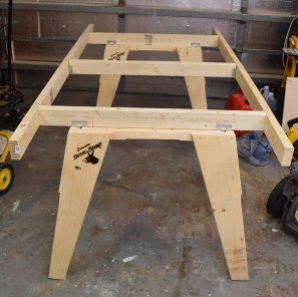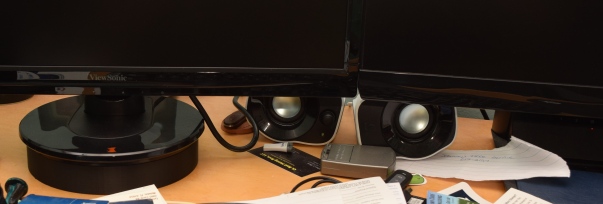This project was completed in July at the old house, but I had to keep it under wraps so it could be a surprise to someone. My wife’s grandmother was a British war bride. She met her American husband at Bushey Park outside of London where he taught air sea survival for the 8th Army Air Force. When the war was over they moved to Michigan (his home) and eventually had a farm called “Little Bushey”, after the place they met. We had talked about calling our new place “Little Bushey South” as a tribute to that. I thought a sign was in order, and no wood could be better than the family wood.
These walnut beams were picked up by my mother’s parents when she was very young. They spent a lot of time around boats and they were used as ballast by someone. No clue how old they were then, but our family has had them for 50+ years.
One of the beams had been cut down a few times, so I cross cut it to about 42″, and then re-sawed it to make a 1 inch thick slab. I left some of the worm eaten edging because it is so good looking. A little work with my jack plane had it smooth and revealed a gorgeous piece of walnut.
In order to make the text for this project I am using my plunge router and custom printed 3D letter templates. I wrote up all the text, then broke each segment up into a size that could be printed. They are keyed to fit together to keep alignment and kerning proper. Letters like “e” and “B” have to be done in multiple segments. The “B” below shows how I tackled this.
The plunge routing went reasonably well, but something shifted part of the way through. My cuts were shallower when I went back and redid certain segments. Not sure what happened, but next time I will make everything double tight. I went back with a chisel and cleaned up the issue areas. The bottoms are still not smooth, but aren’t as uneven as before. That left me with a few accidental chipout segments. See near the top of the “O”. Also, the “h” was in part of a knot. My colorant will want to bleed into those cavities, so I have to fill them.
I used some dark woodworking epoxy to fill these problem areas. First I went carefully with painters tape and dammed up all the problem areas. Next I mixed the epoxy and used a syringe to put just the right amount into the voids. A little light buffing and the epoxy filled the voids but is really hard to see.


I was going to spray paint this, then just plane off the top layer to reveal colored letters. The bottoms are still uneven, so I opted to try epoxy. I bought a big batch of system three epoxy with white color resin. It worked really well. No progress pictures because you have very limited time once the mixing begins.
The places I blocked the chipouts didn’t bleed, and only a little snuck in under the knot around the lower case “h”. A syringe helped me pipe it into each letter, and manipulate the results. The epoxy clung up at the sides and dipped a little in the center. The result is a really awesome shiny 3D lettering effect. It looks quite good on our new mantle. I don’t really understand fireplaces in Florida, but this one looks picturesque.
































